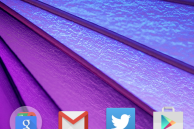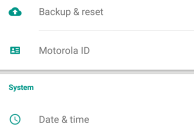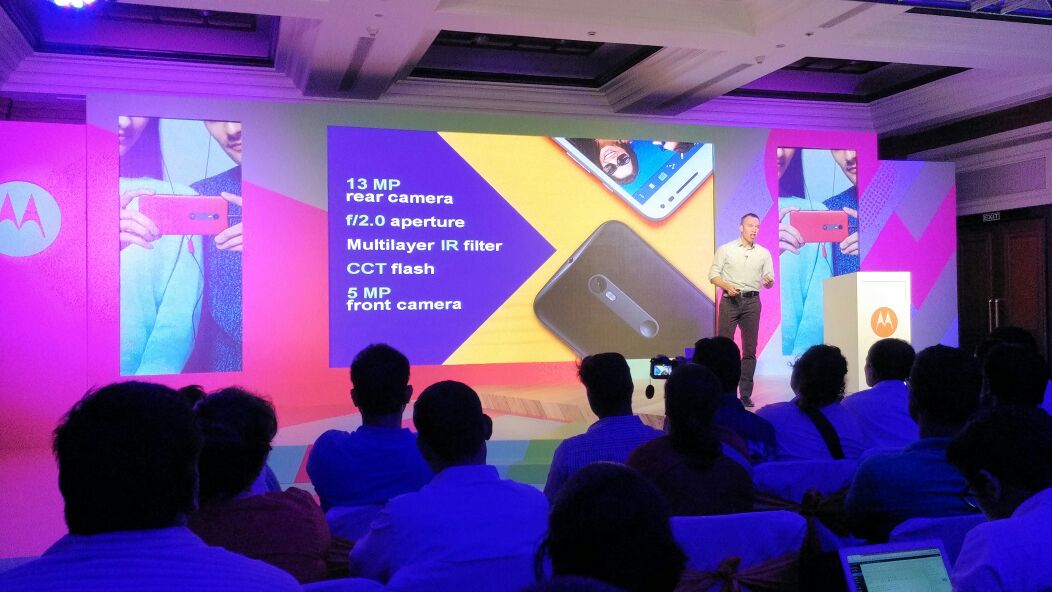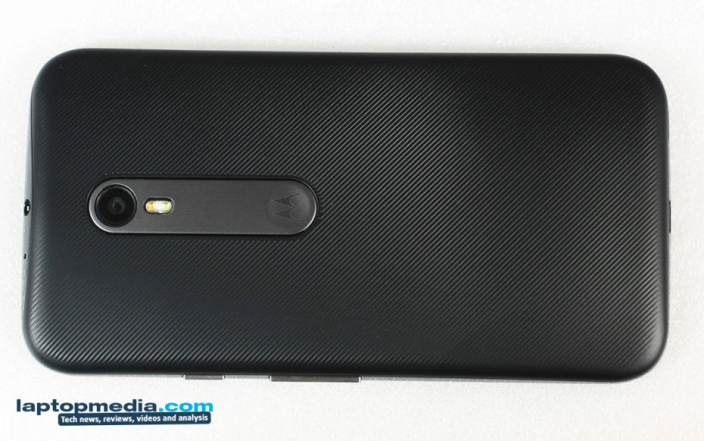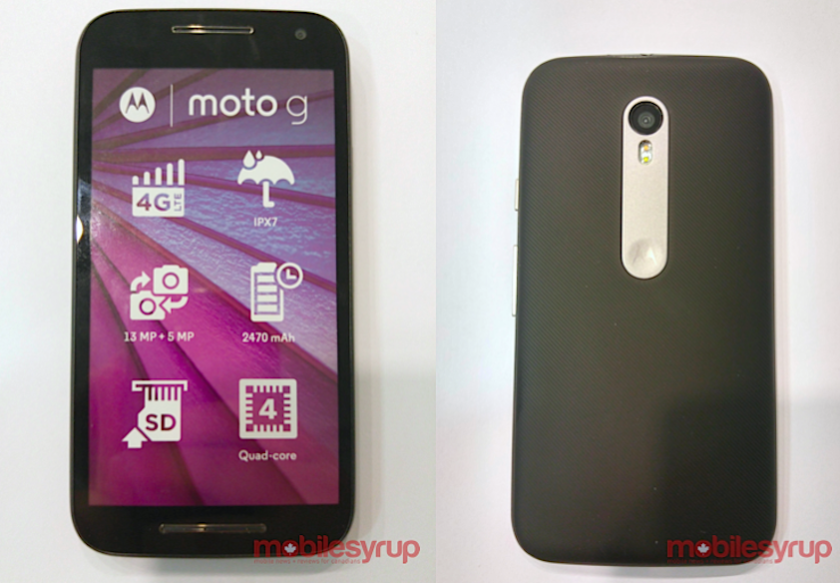
In 2013, Motorola tried scripting a comeback with its new flagship handset — the Moto X. The device packed in many unique features and ran a version of Android that was close to stock, which is something that Android enthusiasts have always craved for.
However, the phone did not do as well as Motorola had hoped for. Instead, Motorola found success later that year with its budget mid-range handset: the Moto G. The handset took the market by storm when it launched in late 2013 and surprised everyone with its performance and how good it was despite costing 1/3rd of what flagship phones usually cost.
In 2014, Motorola followed it up with the Moto G 2nd generation, which featured a bigger screen, faster processor, and front facing stereo speakers. The handset went on to become the company’s most popular and highest selling smartphone ever, and has been a huge success in emerging smartphone markets like India and Brazil.
Over the last one year though, the smartphone market has changed drastically. Xiaomi, Huawei, Asus, and even LG greatly stepped up their offering in the budget smartphone segment, which made the Moto G — once the budget king of smartphones — feel outspec’d, outdated, and overpriced.
This year, the Lenovo-owned Motorola is back with the third iteration of the Moto G that has been improved in key areas to make sure it still stays relevant in the competitive budget smartphone market. So, how good is the Moto G (2015)? Read our review to find out.
Build Quality

The Moto G (2015) has a design language that is similar to its predecessor, though Motorola has made plenty of changes so that consumers are still able to easily differentiate between the three generations of the handset. The back of the handset now features a textured pattern, which gives it a better in-hand feeling compared to the rubbery matte finish on the Moto G (2014). The inclusion of a separate plastic strip for the camera, the dual-LED CCT flash, and the Motorola dimple does a great job of spicing up the rear of the handset.
While the front of the Moto G looks largely the same as its predecessor, the bezel surrounding the display has grown in size. Additionally, the speakers grilles located at the top and bottom are now recessed into the body, which makes them a perfect spot for dust and lint to collect. Unlike its predecessor which came with front-facing stereo speakers, the Moto G (2015) only comes with one speaker, which is located at the bottom. The speaker grille located at the top only acts as a earpiece.

The power and volume keys are located on the right edge of the handset where they are easily within the reach of your thumb. The microUSB port is located at the bottom edge of the device, while the 3.5mm audio jack is located at the top. The dual microSIM card slots and a microSD card slot can be accessed by prying open the back cover.
One of the key advantages that the Moto G (2015) has over its predecessor and other devices in the same range, is its IPX7 certification. Motorola devices have always had some kind of water repellent coating that made sure they survived those accidental liquid spills, but with the Moto G (2015), Motorola is certifying the phone to be water proof for up to 30 minutes in up to 1m of fresh water. This means that not only will the phone emerge unscathed from those accidental liquid spills at a party or on your dinning table but you will also be able to take it to shower with you without worrying about water damage.
Even better, Motorola has achieved this level of water proofing without using any flaps to seal the microUSB port or the 3.5mm audio jack, which has in the past been a very frustrating aspect of phones that were waterproof.
Display

The Moto G (2015) comes with a 5-inch 720p display, which does not seem to be a huge upgrade over its predecessors. I found the display to be very dull at around medium brightness. Cranking the brightness to the max did help in improving the contrast and saturation though.
The brightness levels, viewing angles and sunlight eligibility of the display are pretty good and won’t pose any usability issues in day-to-day usage. However, the dullness of the display at medium to low brightness is definitely a bummer.
Interestingly, the display on the Moto G (2015) responded properly to touch even with water droplets present on the screen. The touchscreen of other phones with waterproofing abilities simply goes bonkers once it comes in contact with any kind of liquid.
Software
Over the last couple of years, Motorola has made the software of its devices one of its strengths. While other OEMs continue to modify Android with their own skin in a bid to deliver ‘better’ user experience, Motorola delivers a stock build of Android on its devices with a few meaningful addition. This has two-fold benefits: firstly, it allows the company to quickly roll out updates to its devices; secondly, the device is not burdened by additional bloatware or skin that bogs its performance down over a period of time.
The Moto G (2015) is no different in this regard. It runs on Android 5.1.1 Lollipop out of the box and comes with some of Motorola’s unique features that were previously reserved for its high-end devices. This includes two incredibly handy gestures and Moto Display. The first of the two gestures basically involves twisting your wrist twice to quickly launch the camera app. It works even from sleep mode thereby increasingly its usefulness. In my testing, I found the camera gesture to work as advertised, though it is not as reliable as it was on the Moto X. The handset automatically launched the camera multiple times even though I had not done the said gesture. The second ‘chop chop’ gesture involves chopping the phone twice to start the flashlight. Repeating the gesture will then automatically turn off the flashlight.
- The homescreen
- Moto Actions, Display, and Assist.
- Gestures under Moto Actions.
Moto Display, which wowed consumers when Motorola first introduced it with the Moto X in 2013, is also present on the Moto G (2015), even though the phone comes with a LCD screen. With Moto Display, the screen on the Moto G (2015) will light up in a low power mode to display any unread notification. Even if you don’t have any unread notifications, the display on the phone will turn on to display the time when you pick the phone up after a brief period of inactivity. You can then unlock the phone by simply dragging the lock button shown on the screen to the bottom.
Moto Display is a such feature that you start appreciating after using for a long period of time. During the course of my review period, I got so used to the feature that I stopped pressing the power button on the handset to unlock the device and check for new notifications manually.
Motorola has also included a few other apps on the Moto G, including Moto Assist and Migrate. The former automatically triggers certain actions depending on your location or time of the day. For example, if you are in your office, the phone will automatically mute all incoming notifications, except for the ‘Priority’ ones. Migrate, on the other hand, makes it easier to transfer your contacts and other data from your previous smartphone.
Performance
When compared to other smartphones sold in the same price range in India and other Asian markets of the world, the Moto G (2015) is not going to win any awards. While most of its competitor come with a Full HD screen and an octa-core Snapdragon 615 processor, the Moto G only comes with a 720p resolution screen and a quad-core 64-bit Snapdragon 410 chipset clocked at 1.2GHz. This is the same processor that Motorola has used on the Moto E 4G, so it is disappointing to see the company use the same processor on its premium budget smartphone.
Despite its modest internals though, the Moto G (2015) performs admirably. During my testing period, I rarely faced lags or slowdown while using the device for day-to-day activities. None of the apps that I use on a regular basis like Snapchat, Twitter, Facebook, Fenix, Relay Pro, Google Drive, and Chrome displayed any performance issues. The smooth performance of the phone can likely be attributed to the near stock build of Android that the handset runs on.
It is only when you start taxing the Moto G (2015) by playing games like Riptide GP2 or Asphalt 8 that the device starts struggling. While playing Riptide GP2, I noticed slowdowns, lag and drop in frame rate to be very common. Casual games like Threes! and Dots, however, ran just fine.
Until and unless you play heavy games on your smartphone, the performance of the Moto G (2015) is going to be more than adequate for you. In fact, I will even go ahead and say that the phone is smoother than the Galaxy S6 in day-to-day tasks.
Camera

Motorola has greatly stepped up its game in the camera department this year and it shows. While previous Moto Gs had poor camera, Motorola has equipped the new Moto G (2015) with a 13MP F/2.0 shooter at the rear, which can take some great shots. As you will see in the shots below, the Moto G (2015) is capable of capturing some great shots irrespective of the lighting conditions.
The handset tends to output natural looking photos and does not exhibit any strange post-processing issue. While the camera was quick to auto focus on a subject almost all the time, it did tend to struggle to focus on an object in some close-up macro shots.
- The phone sometime has issues focussing on close up objects
- HDR helps in bringing out the details in contrasting situations
- The Moto G (2015) is able to strike a fine balance between detail and noise in low-light images
- Even in low light, the camera performs admirably.
The great camera performance of the handset is further complemented by a fast and light camera app that is easy to use. You can start clicking pictures on the device by simply launching the camera app and tapping on the subject whom you want to focus on. There was also no significant delay in taking back-to-back shots on the handset or any notable shutter speed delay.
The front-facing 5MP camera also performed admirably and did not exhibit any strange behaviour.
Battery Life and Conclusion
While the Moto G (2015) comes with the same display size and resolution as its predecessor, Motorola has drastically increased the battery capacity from 2070mAh to 2470mAh. Thanks to the increased battery capacity, the new Moto G kills it in the battery life department. During my testing period of over 2 weeks, I consistently got around 4.5 hours of screen on time over a period of 20 hours. My usage primarily involved browsing, tweeting, lots of WhatsApp and Hangouts, and clicking pictures. This was with 2 Gmail accounts constantly syncing in the background and primarily on a 3G network.
To conclude this review, I can only say that the Moto G (2015) is the perfect example of why specs don’t matter. While the handset is easily the best device in its price range in countries like Europe and United States, it is easily outspec’d by devices from Xiaomi, Huawei, and other Chinese OEMs in countries like India. However, despite coming with inferior specs, the Moto G (2015) is able to deliver a user experience that simply cannot be matched by them.
In the end, if you want a no-frills low-budget Android smartphone that works without any issues, buy the Moto G (2015) eyes closed.
